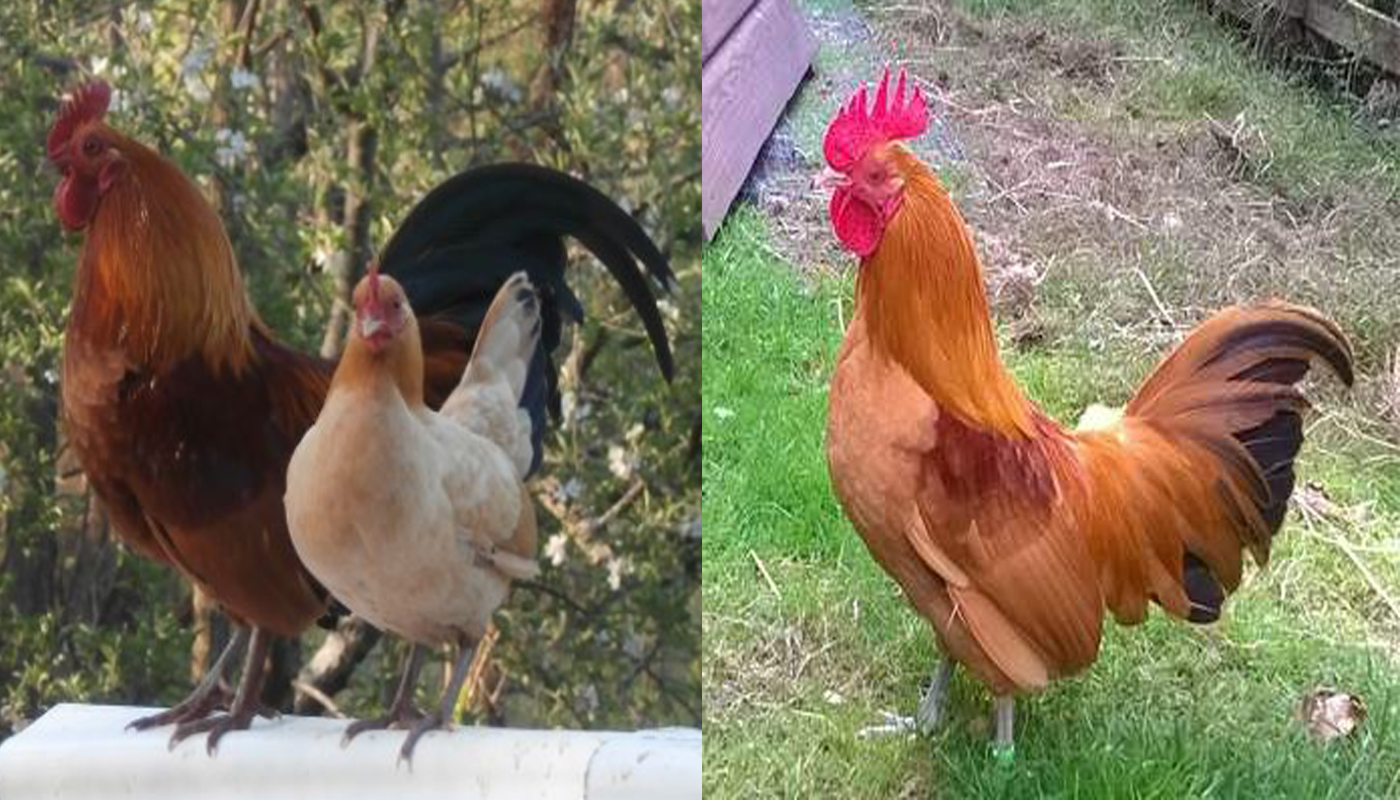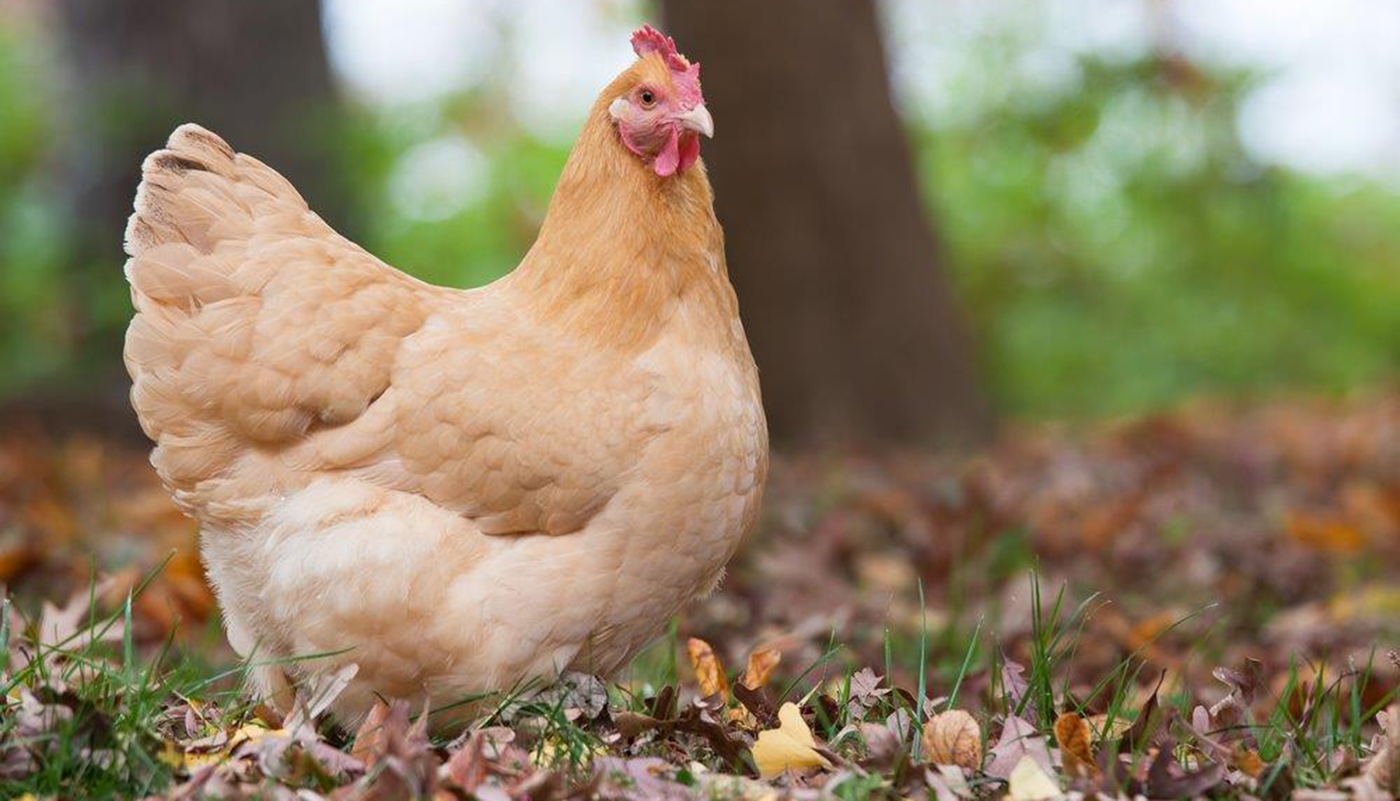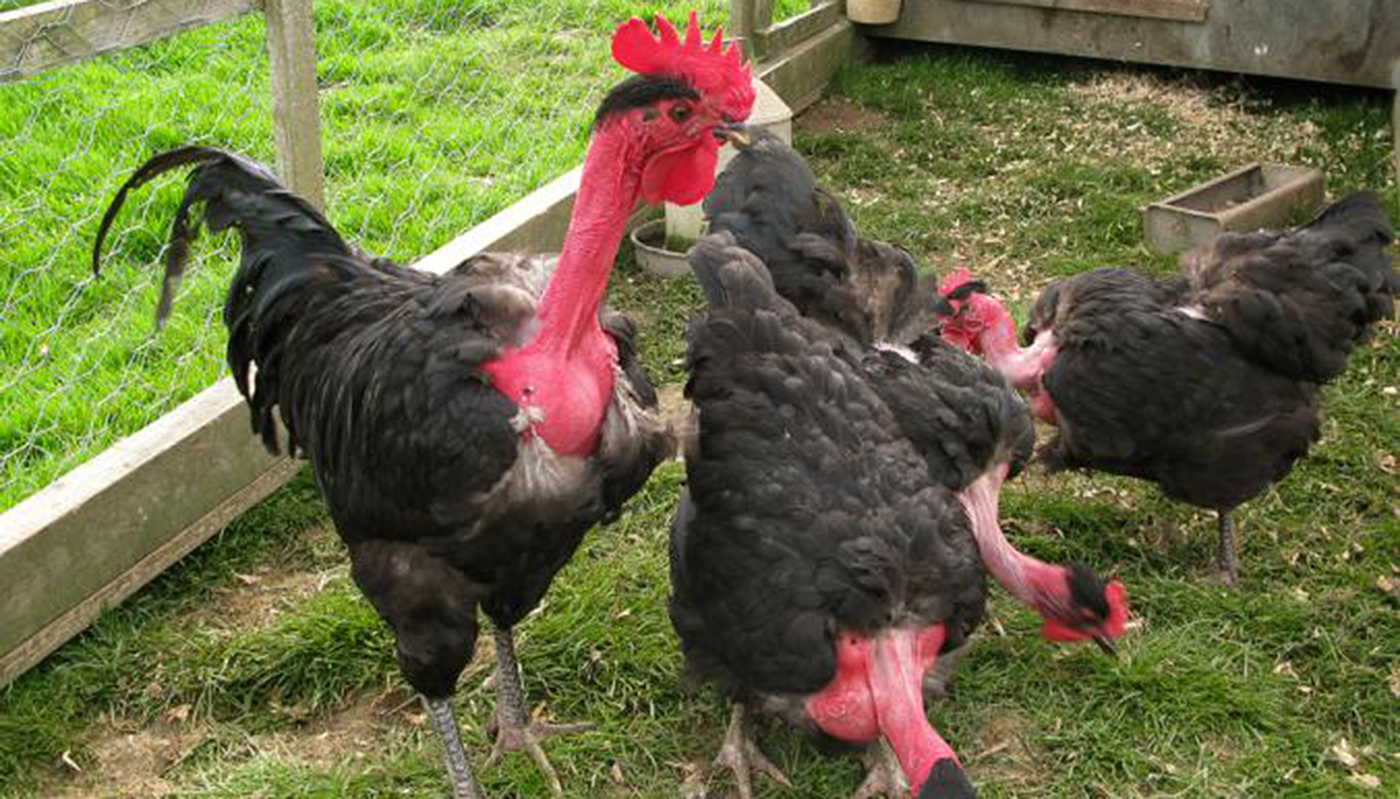
This sweet little breed with its ancient roots has been the main contender in the development of other Bantams. It is one of the oldest known Bantams and is thought to have been around even before the 1500’s.
As its eggs are small and more round than normal egg shape not large enough to use as a normal table egg. Their carcass is also too small to make a good table bird. But this little chicken has its uses and has played its part in the development of breeds such as the Sebright. It is also a great brood hen that loves to sit on and hatch eggs. They will even foster other chickens/breeds chicks as they are excellent little mothers.
As Nankin are small and cannot really compete with the larger chickens for food it is best to keep them in a flock of their own or with other Bantams.
Nankin like to keep close to their flock and will seldom stray too far from them. The Nankin roosters are very protective of their hens and will come running ready to defend a hen in distress.
| Country of Origin: | United Kingdom |
| American Poultry Association: | Yes – They are recognized as a breed of chicken in the United States Eight colors were accepted into the Standard of Perfection in 1874 |
| Chicken Category: | Bantam Breed |
| Chicken Class: | Single Comb Clean Legged Bantam Classification and Rose Comb Clean Legged Bantam Classification |
| Bantam Variety Available? | There is only a Bantam Breed |
| Good Starter Chicken? | They do make a good starter chicken as they are calm friendly little birds that are loyal to their humans and flock. But they are on the critically endangered list so there may be some procedures that have to be followed to own and or breed them. |
IDENTIFICATION⇒ |
Appearance/Body: They are one of the breeds that can be found with either a single comb or a rose comb. Their wattles, combs and earlobes are a pretty red. The hens are lighter in color to the males and both have black tail feathers with the male’s flight feather black as well. Their tails are held perpendicular to their upright true Bantam style posture with their puffed out little chests. Their four-toed feet and short little legs are usually a slate grey. Some have white color legs which are not ideal and is seen as a fault. This is caused by a hidden recessive gene from the male’s side.
Color(s) Buff/Chestnut color which is lighter in the females.
Comb: They have a single comb or a rose comb
Ave. Weight: Pullet: 20 oz
Hens: 22 oz Cockerel: 22 oz Rooster: 24 oz |
PURPOSE⇒ |
Eggs: They are very fair egg layers.
They lay small sometimes round white eggs They lay 80 – 100 eggs per year They will lay throughout the year They start to lay eggs from around 24 weeks old.
Meat: They have white skin
They are not meat chickens
Breeding: They are not too difficult to breed unless you intend to show them. They are on the critically endangered lists and registered with various poultry conservation societies for their low numbers. If you wish to breed Nankin you may need to contact one of the Agencies/Societies/Breeders to obtain all the necessary information required to breed them.
The hens get broody frequently They are really good brood hens They love to sit on their eggs or any other chickens’ eggs They will raise their chicks making surprisingly good mothers They have been known to mother other chickens/breeds chicks
Show Bird: They make for great Bantam Class show bird especially as they are a rare breed these days.
Pets: They are happy friendly little chickens that make excellent little pets.
Other: They are great chickens to keep as brood hens.
|
CHARACTERISTICS |
|
|---|---|
| Life Expectancy: | The average lifespan is 6 – 8 years |
| Health: | Except for catching chills they have no known health issues that they are prone to |
| Temperament: | They love to chat and are calm, friendly, active and inquisitive little chickens. They are a delightful little chicken. |
| Flyers? | They can fly |
| Noisy Birds? | They can get noisy in a bigger flock |
| Interaction with other chickens: | They tend to keep to the safety of their own flock preferring to mingle with other Nankin or Bantams |
| Good with kids? | They are really good around supervised children |
| Socialize Behavior? | They will get used to being around domestic animals but prefer to mingle with their own kind as they feel safer that way. |
| Known predators: | Always keep an eye on domestic pets such as dogs and cats. If hawks and or foxes are in your area it is always best to take precautions. These little chickens are fair prey for predators on land and from up above. Check with local animal shelters, zoos, vets, animal control and or pet stores about common predators in your area. |
| Conservation Status: | These birds conservation status is recorded as “critical” |
IDEAL ENVIRONMENT |
|
|---|---|
| Garden Size: | They do not mind being confined and are ideally suited to smaller to medium sized gardens. Gardens that offer a lot of protection and places to hide from danger. The best is a larger fully covered coop run in a tractor style that can be repositioned around the garden |
| Ideal Climate: | They are tolerant of all weather and climates. Although most owners keep their coop in a barn or shed. |
| Ideal Coop: | The rule of thumb for any coop is 50 cm x 50 cm per hen/rooster in the coop. Ensure there is a good space for the nesting boxes and nightly roosting rails at least 1.5 inches wide. Good ventilation for air but not too drafty especially in winter. It is always a good idea to raise the coop off the ground to give the birds a dry place to roost and lay especially in wet weather. |
| Ideal Coop Run: | They can fly but they also like to keep close to their flock and home so full covering the coop run will offer them a greater sense of security. |
| Ideal Flock Size: | They prefer a medium to larger size flock as they like safety in numbers. |
| Special Instructions: | They do not have any special instructions. |
| Accessories: | The following accessories are ideal for your coop: Nesting boxes Straw for the boxes and roosting area Roosting rails Perches Water troughs/bowls Food bowls/feeders Heating lamp(s) Animal carrier for transport purposes |
| You may Also Like: | 45 FREE DIY CHICKEN COOP PLANS, TUTORIALS AND DESIGNS |
WHERE TO BUY THEM |
|
|---|---|
| Live Poultry Outlets: | A few poultry outlets my keep hatchlings but they are quite rare |
| Internet Poultry Websites: | Internet sites such as Purely Poultry sometimes have hatchlings. |
| Organizations: | American Poultry Association, The Rare Poultry Society and the American Livestock Conservancy will be able to provide valuable information about owning, breeding and showing the Nankin Bantam. |
| Breeders Clubs: | For information on breeders Feather Site and the American Bantam Association will have a comprehensive list. |
| Other: | The organizations and or breeders listed above may also have a host of valuable information about your chickens. They will also be able to provide you with any special instructions, problems, etc. about your chickens. |
HISTORY
The Nankin is an ancient breed and believed to be one of, if not the oldest true Bantam breeds. A true Bantam means that there is no larger chicken counterpart.
The Nankin is thought to have originated in Southeast Asia the exact location of which is not known.
Most of the Nankin that are found in Europe and the USA originate from the United Kingdom where there is an indication of them being present going back to around the 16th century.
Their presence and population in the West grew in the and during the 18th century where they became the basis for many other of the Bantam breeds found today such as the Sebright.
The Nankins popularity waned when “hen fever” hit the world and the breeding of rare exotic chicken breed became the trend.
One of the reasons their population did not completely cease to exist is that they were kept for incubating game birds eggs being the exceptional brood hens that they were.
Nankin in the USA became popular in the 1960’s when the American Bantam Association took an interest in the breed. In 2006 an American Nankin Breed Club was started and although they are rare in the USA they were admitted to the Standard of Perfection in 2012 by the American Poultry Association.
The estimated number of the Nankin breed was around 50 to 100 birds in 2002 putting their conservation status as critical.
By 2017 the breed was no longer listed on the watchlist of the Rare Breeds Survival Trust but are still listed as critical by the American Livestock Conservancy.
NOTES / SPECIAL INSTRUCTIONS
As they are registered as a “critical” conservation status they may need an extra license to own or keep in your garden. For advice on what the bird’s conservation status and orders are please check with your local conservation department.
For breeders, it is imperative that you always check your bird’s bloodlines and ensure you are buying your birds from a reputed breeder/farm. In order to sell birds of such stature, they have to be recorded and documented, always check with local animal breeding organizations for these records.
These legitimate documents are also required should you wish to show your bird(s) in various poultry shows/competition showings.
Video
For information and advice on adopting rescued animals, you can visit or contact your local animal welfare center.
USEFUL LINKS
- Caring for your Chicken
- Feeding
- Health
- Socializing your Chicken
- Breeding Chicken
- Raising Chickens A-Z
- Hatching Eggs
- What is Molting
- Animal Shelter (ASPCA)
- American Veterinary Medical Association
- American Poultry Association
- American Animal Welfare Society
- American Animal Control
- American Animal Husbandry Society
References
- https://en.wikipedia.org
- https://livestockconservancy.org
- https://www.roysfarm.com
- https://www.mypetchicken.com
- https://www.backyardchickens.com
- https://www.feathersite.com/
 Common Digestive Disorders in Chickens: Symptoms, Treatment, and Prevention
Common Digestive Disorders in Chickens: Symptoms, Treatment, and Prevention Barnevelder Chicken Breed – Everything You Need to Know
Barnevelder Chicken Breed – Everything You Need to Know Sicilian Buttercup Chicken Breed – Everything You Need to Know
Sicilian Buttercup Chicken Breed – Everything You Need to Know Aseel Chicken Breed – Everything You Need to Know
Aseel Chicken Breed – Everything You Need to Know Cornish Chicken Breed – Everything You Need to Know
Cornish Chicken Breed – Everything You Need to Know Orpington Chicken Breed – Everything You Need to Know
Orpington Chicken Breed – Everything You Need to Know Buckeye Chicken Breed – Everything You Need to Know
Buckeye Chicken Breed – Everything You Need to Know Naked Neck Chicken Breed – Everything You Need to Know
Naked Neck Chicken Breed – Everything You Need to Know FACTS ABOUT HATCHING EGGS – HATCHING EGGS PART 4
FACTS ABOUT HATCHING EGGS – HATCHING EGGS PART 4 Top 10 Best All Purpose Chicken Breeds
Top 10 Best All Purpose Chicken Breeds Welsummer Chicken Breed – Everything You Need to Know
Welsummer Chicken Breed – Everything You Need to Know Chicken Vaccinations and why they are Important to a Flock
Chicken Vaccinations and why they are Important to a Flock